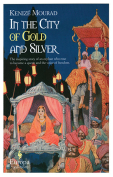The Bone Clocks by David Mitchell
New York. Random House. 2014. ISBN 981400065677
 The Bone Clocks initially seems more conventional than Cloud Atlas—in short, a real novel. It begins in the mid-1980s and moves forward in decade jumps to end in 2043. Rather than transitions, David Mitchell prefers the time-machine effect: one lands in a year and catches up on who’s lost, who’s still around, and who’s new that matters. Such information may be slow in coming, since one can’t expect participant-narrators to ruminate a full history of the intervening years for an audience they don’t know is there.
The Bone Clocks initially seems more conventional than Cloud Atlas—in short, a real novel. It begins in the mid-1980s and moves forward in decade jumps to end in 2043. Rather than transitions, David Mitchell prefers the time-machine effect: one lands in a year and catches up on who’s lost, who’s still around, and who’s new that matters. Such information may be slow in coming, since one can’t expect participant-narrators to ruminate a full history of the intervening years for an audience they don’t know is there.
In common with Cloud Atlas is locating the narration with key characters who foreground very distinct voices. This is certainly one feature of the author’s genius throughout. For instance, in “Myrrh Is Mine, Its Bitter Perfume,” set in 1991, one two-page section features direct and indirect references to Lolita, the Beatles, and the Dalí-created dream sequence from Alfred Hitchcock’s Spellbound. It’s a brilliant rendering of the style of an earlier scene, in which undergraduates, including the narrator, two pints down, try to out-annotate each other.
Four characters hold things together, more or less. Two are familiar types from Atlas: a young rogue—reminiscent of Robert Frobisher—who opts for staying young by joining what becomes the Other Side; and an author on the downside of his fame, jealous of newcomers, exacting revenge on a reviewer, then remorseful. A third is a latecomer, an “atemporal” professional reincarnated from someone never met, a chief organizer for the good side.
Most of the character-plots link with the figure of Holly Sykes, introduced as a precocious fifteen-year-old, briefly a runaway, who goes through life with a diagram of a labyrinth given to her by her younger brother, who then goes missing. The cover of the novel, end pages, and section title pages all feature circular designs or galaxies so we can’t forget this figure until it activates in 2025. Holly has psychic visions, hears and sometimes speaks in voices, and eventually publishes a best-seller documenting these episodes. Thus she is primed to do more than age.
When transformation arrives, one’s suspension of disbelief or indulgence is severely tested. It’s two-thirds of the way through the novel, and inklings of another reality, on the periphery, suddenly shape into a new central reality. Everything both was and wasn’t what it seemed to be. It must now be explained to Holly (and the reader), a lengthy exposition that has all the excitement of a lecture hall. The subsequent battle of Manichaean forces picks up the action—confusing as it is—before a return to the normal world eighteen years later, now abnormal, with the breakdown of most nation-states.
One is engaged, exasperated, reengaged, and sometimes (unexpectedly) moved. Gaps and fissures arise in time, thought, and action. A propulsive style almost effaces the coincidences that may be chance, a butterfly effect or part of a “Script.” One accepts not knowing. The title and the clock icons set at different times in each chapter suggest, at least, that wake-ups and deaths have been set.
David Mitchell is one of the best storytellers around. But, as with Cloud Atlas, I rather prefer his stories when I don’t have to conceive of them as part of a unified plot.
W. M. Hagen
Oklahoma Baptist University




























